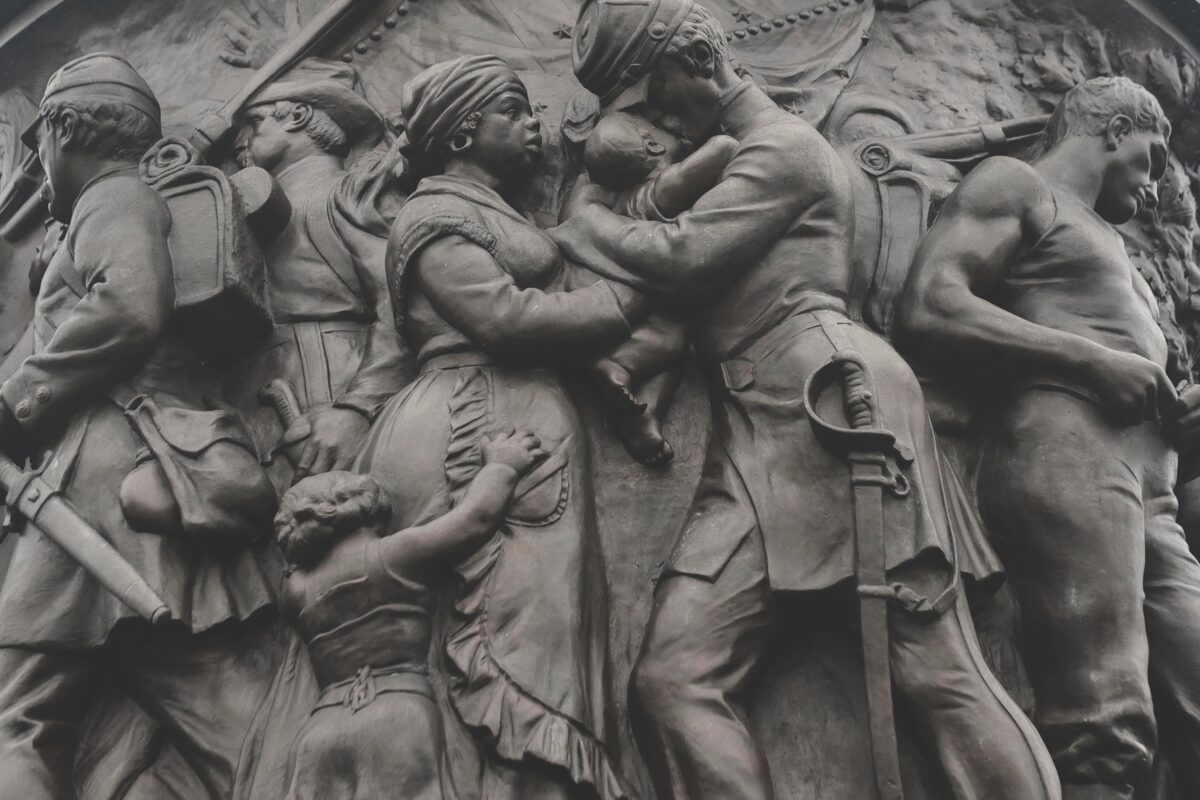Retired Army Brig. Gen. Ty Seidule spent two decades teaching history at West Point. His new book, Robert E. Lee and Me: A Southerner’s Reckoning With the Myth of the Lost Cause, which combines history and memoir, reflects on Confederate memorials and Seidule’s education in segregated academies and at Washington and Lee University in Lexington, Va., where R.E. Lee was venerated. His book got its start when he wondered why there were so many Lee memorials at West Point, where until around 1898, Confederates were reviled.
You revered Confederates.
I grew up in Alexandria in Northern Virginia, the last outpost of segregation. I was bused from the white elementary school to an all-Black school named RE Lee, named in 1961 to protest integration. Alexandria named Confederates as romantic heroes and hid slavery and inequality to ensure racial hierarchy.
Why did you decide to research the history of Confederate memorials related to the U.S. Army?
I was at West Point and I was chair of the Memorial Committee. I had been in the Army for 25 years and we were creating a new memorial room. It was going to commemorate all the West Point graduates killed from the War of 1812 to the Wars on Terror. I briefed senior leaders to say we can’t put Confederates in because they fought against their country, they killed U.S. Army soldiers, they renounced their oath—for the worst possible reasons, to create a slave republic, and by the way, the building bylaws say it can contain no unworthy subjects. That’s because the person who gave the money for the building was the anti-Confederate postwar superintendent George Washington Cullum. I got nowhere. They said they wanted to bring people together.

Are you the first to research this topic?
No one had written about the Army and West Point and the aspect of memory before. At West Point, there are more than a dozen things named after Confederates, most of them after Robert E. Lee. I wondered why. I understood Washington & Lee University, where I went to school. But why here? I asked and nobody knew. So I went to the archives. In the 19th century, West Point banished Confederates, it was an anti-Confederate museum in a way. No Confederates in the cemetery, our big monument has no Confederates. Our great motto: “Duty, Honor, Country” was anti-Confederate. So when did Lee Barracks, Lee Road, and the Lee Housing area by Lee Gate all come? They came in the 1930s as a reaction to the first Black cadets coming to West Point in over 50 years, and then came in the 1950s when the Army was fighting forced integration. It came again in the early 1970s when minority admissions began. So Confederate memorialization both in the Army and at West Point is a 20th century phenomenon, and it’s a reaction to integration.
Explain why so many U.S. Army bases, such as Fort Bragg and Fort Hood, are named after Confederates.
They were named in WWI and WWII to bring America—White America—together against a common enemy, Germany, but at the expense of Black Americans. It’s a segregated Army, and it wants to stay segregated. Congressmen from the South control the committees, and you have to listen to them, as well.
You single out two memorials as especially awful. One is at Arlington National Cemetery.
Arlington National Cemetery was created in 1864 by Montgomery Meigs in response to the Overland Campaign. It is the old estate owned by Lee’s father-in-law. So they started burying U.S. soldiers there. But in the early 20th century, as White people in the South came into power and disenfranchised Black people, it changes and there are Confederates reburied in the southern part of the cemetery around Stonewall Jackson Circle. And then they put up a monument: an overweight black “mammy” who has a tear in her eye as she takes a baby from a Confederate officer. It’s meant to show that slavery was the best form of labor and the South was right and the United States was wrong. And the White South will always be right and the United States will always be wrong.
The other is little known.
The second is Fort Belvoir, Va. It was named in WWI after Andrew Humphreys, a Federal Civil War general. It was renamed in 1935 to appease Southern segregationist Howard Smith who had first voted against the Social Security Act. He later voted for it because Franklin Delano Roosevelt renamed Fort Humphreys as Fort Belvoir after the name of the slave plantation, or, as I like to call it, the enslaved labor farm, created in the 18th century and burned to the ground in 1783. It was owned by a loyalist, Lord Fairfax, who wrote in his account book that he paid 10 shillings to bed a Black woman—rape an enslaved woman—at the age of 83. Finding the terrible awful racist nature of how we named these forts and who we named them after—I just could not believe it, and it was not the U.S. Army that I wanted to be a part of.
Did you have trepidation about publishing this book?
Yes. But I did a video that the war was about slavery and it went viral, got about 30 million views. I got such hate mail for that. I got death threats at my West Point e-mail address. The Army investigated me for political speech, for saying the war was about slavery. I knew what I was getting into. The form of this book was really my wife’s idea. She said the only way you’re going to do this is to tell your own story. One reason I chose to retire was because I could not write about it in uniform openly. It was too hot a topic for the Army to deal with. And now it’s not. I was a pariah about this subject, but now the Army can’t wait to change. It’s amazing the amount of change that has happened since then.
Talk about Lee Chapel at Washington & Lee University.
The Lee Chapel has no Christian iconography. The only sculpture in the apse is Lee lying on the altar. When the Lost Cause is a civic religion, you need saints for that religion. Lee was revered in his lifetime, but he was a cruel enslaver. Why did he choose the Confederacy? Because of his undying belief in human enslavement. There were eight U.S. colonels from Virginia in 1861, and Lee is the one and only one who did not remain with the United States. I use the Lee Chapel as a way of getting at the Lee reverence. In the 1870s, Jubal Early and his people created the Lost Cause. By the early 20th century, President Taft and Theodore Roosevelt join in. The Lost Cause myth becomes a White American phenomenon. I grew up with the belief that the greatest gentleman of all was Robert E. Lee. That is just not the value that we should be teaching to U.S. Army soldiers. The only way to prevent a racist future is to first understand and acknowledge our racist past. We have got to be honest about who we are and who we’ve been if we want to make sure we aren’t this way going forward. Who we commemorate should represent today’s values.
Interview conducted by Senior Editor Sarah Richardson.





